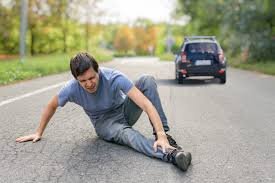Exploring the Causes of Hit and Run Accidents
Hit and run accidents are a serious problem that can have devastating consequences. When a driver flees the scene of an accident, it not only leaves the victim without any recourse for compensation, but it also shows a complete disregard for the well-being of others. In order to address this issue and work towards preventing hit and run accidents, it is important to understand the underlying causes that lead to these incidents. By examining these causes, we can develop strategies to reduce the occurrence of hit and run accidents.
Lack of Accountability
One of the primary reasons why hit and run accidents occur is due to a lack of accountability. Some drivers may choose to flee the scene of an accident because they are afraid of facing the consequences of their actions. This could be due to a number of factors, such as driving under the influence of drugs or alcohol, driving without a valid license, or having outstanding warrants. By running away, these individuals hope to avoid being caught and facing legal repercussions.
In some cases, drivers may also lack insurance or have insufficient coverage, which can motivate them to flee the scene. Without insurance, they may be unable to afford the costs associated with an accident, such as medical bills or vehicle repairs. Rather than taking responsibility for their actions, they choose to escape, leaving the victim to bear the financial burden.
Fear of Negative Consequences
Another factor that contributes to hit and run accidents is the fear of negative consequences. Drivers may be afraid of the impact that an accident will have on their driving record, insurance rates, or even their employment. They may worry that their insurance premiums will increase or that they could lose their job if they are involved in an accident. These concerns can lead them to make the impulsive decision to flee the scene in order to avoid these potential repercussions.
Additionally, some individuals may have a fear of law enforcement or the legal system. They may have had negative experiences in the past or may be distrustful of authorities. This fear can further motivate them to leave the scene of an accident, as they do not want to interact with the police or go through the legal process.
Lack of Awareness or Empathy
It is also important to consider the role that lack of awareness or empathy plays in hit and run accidents. Some drivers may simply not be paying attention to their surroundings or may be distracted by their phones, music, or other passengers. This lack of awareness can cause them to miss important details, such as the fact that they have been involved in an accident.
In other cases, drivers may be aware of the accident but lack empathy for the victim. They may not fully comprehend the potential harm they have caused or may not feel a sense of responsibility towards others on the road. This lack of empathy can lead them to believe that fleeing the scene is a viable option, as they do not fully understand or care about the consequences of their actions.
Strategies for Prevention
In order to prevent hit and run accidents, it is crucial to address the underlying causes and develop effective strategies. Here are a few approaches that can be taken:
1. Education and Awareness Campaigns
One of the most effective ways to prevent hit and run accidents is through education and awareness campaigns. By educating drivers about the consequences of fleeing the scene of an accident and the importance of taking responsibility for their actions, we can help change attitudes and behaviors. These campaigns can be conducted through various channels, such as social media, television, radio, and community events.
2. Stricter Penalties
Another approach is to implement stricter penalties for hit and run offenses. By increasing the consequences for fleeing the scene of an accident, such as higher fines, longer license suspensions, or even jail time, we can deter drivers from engaging in this behavior. It is important for the legal system to send a clear message that hit and run accidents will not be tolerated and will be met with severe consequences.
3. Improving Road Infrastructure
Improving road infrastructure can also play a role in preventing hit and run accidents. By implementing measures such as traffic cameras, better lighting, and clear signage, we can create an environment that encourages responsible driving and discourages reckless behavior. These improvements can help increase visibility and make drivers feel more accountable for their actions.
4. Encouraging Responsible Insurance Coverage
In order to address the issue of drivers fleeing the scene due to lack of insurance, it is important to encourage responsible insurance coverage. This can be done through public awareness campaigns that highlight the importance of having adequate insurance and the potential consequences of driving without it. Additionally, insurance companies can offer incentives or discounts to drivers who have a clean driving record and maintain proper coverage.
5. Enhancing Law Enforcement Efforts
Lastly, enhancing law enforcement efforts can help prevent hit and run accidents. This can involve increasing police presence on the roads, conducting targeted enforcement campaigns, and improving response times to accidents. By making it clear that hit and run incidents will be thoroughly investigated and offenders will be held accountable, we can deter drivers from fleeing the scene.
Conclusion
Hit and run accidents are a serious problem that require attention and action. By understanding the causes of these incidents, we can develop effective strategies to prevent them from occurring. Whether it is through education and awareness campaigns, stricter penalties, improving road infrastructure, encouraging responsible insurance coverage, or enhancing law enforcement efforts, it is important that we work together to create a safer environment for all road users. Only by addressing the root causes of hit and run accidents can we hope to reduce their occurrence and protect the well-being of our communities.
